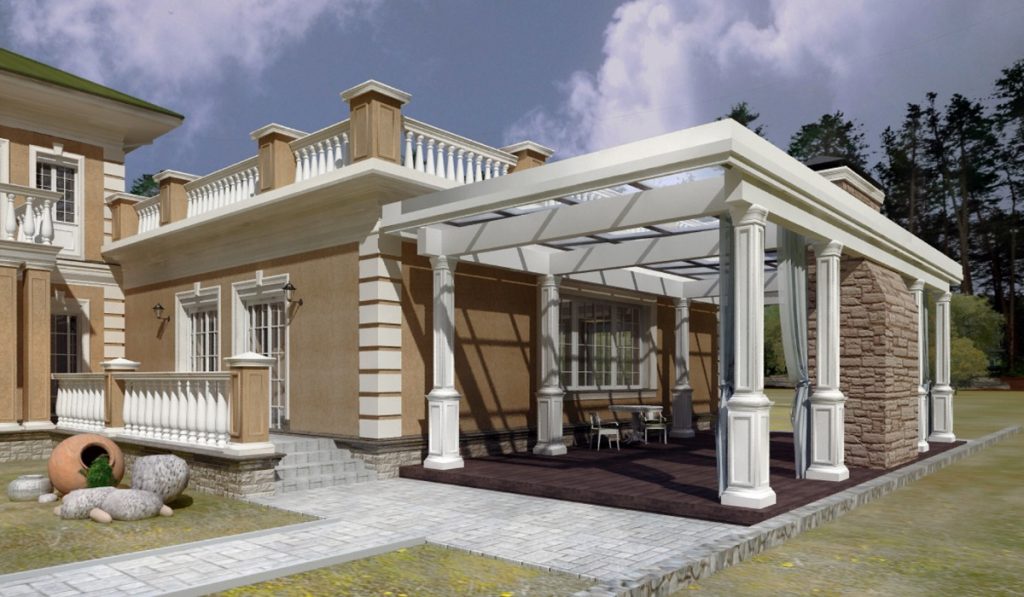As housing demands continue to soar, innovative solutions are emerging to address the growing need for affordable and flexible living spaces. Enter the ADU, or Accessory Dwelling Unit, a concept that has captured the attention of homeowners, urban planners, and housing advocates alike. But what exactly is an ADU, and why is it garnering such buzz? Let’s delve into the intriguing world of these supplementary residences and uncover their potential to transform the housing landscape.
Understanding the Essence of an ADU
An Accessory Dwelling Unit (ADU) is a secondary residential unit that is built on the same lot as an existing primary residence. These compact living spaces can take various forms, including:
- Detached ADUs: Standalone structures, such as backyard cottages or converted garages, physically separated from the main house.
- Attached ADUs: Units that are physically attached to the primary residence, such as a basement apartment or an addition above a garage.
- Interior ADUs: Carved-out spaces within the primary residence, like an attic or a portion of the main living area converted into a separate unit.
ADUs are typically smaller than the primary residence and are designed to provide independent living quarters with their own kitchens, bathrooms, and entrances.
The Growing Popularity of ADUs
The rising popularity of ADUs can be attributed to several factors:
- Affordable Housing: ADUs offer a cost-effective solution for individuals seeking affordable housing options, either as rental units or as multi-generational living spaces.
- Additional Income Stream: Homeowners can generate supplemental income by renting out their ADUs.
- Flexible Living Arrangements: ADUs accommodate various living situations, such as providing accommodation for aging parents, adult children, or extended family members.
- Environmentally Friendly: By maximizing the use of existing lots, ADUs promote sustainable development and reduce urban sprawl.
The Benefits of Building an ADU
Financial Advantages
- Rental Income: By renting out an ADU, homeowners can generate a steady stream of passive income, helping to offset mortgage costs or generate additional revenue.
- Increased Property Value: The addition of an ADU can potentially increase the overall value of a property, making it a wise long-term investment.
Living Flexibility
- Multi-Generational Housing: ADUs provide an ideal solution for families seeking to accommodate aging parents or adult children while maintaining privacy and independence.
- Guest Accommodations: An ADU can serve as a dedicated guest suite, offering visitors their own private space during extended stays.
Environmental Sustainability
- Compact Living: By promoting efficient use of existing residential lots, ADUs contribute to reducing urban sprawl and preserving open spaces.
- Reduced Carbon Footprint: Smaller living spaces generally consume fewer resources, leading to lower energy consumption and a reduced environmental impact.
Navigating the Legal Landscape
- Zoning Regulations: Local zoning laws and building codes often dictate the permitted size, location, and design of ADUs, ensuring they align with community standards.
- Permits and Approvals: Most municipalities require obtaining the necessary permits and approvals before constructing an ADU, ensuring compliance with safety and building regulations.
- Homeowners’ Associations (HOAs): In communities governed by HOAs, additional guidelines and restrictions may apply to the construction and operation of ADUs.
Design Considerations for ADUs

- Size and Layout: While ADUs are generally compact, thoughtful design can maximize functionality and create a sense of spaciousness.
- Accessibility: Incorporating accessible features, such as wider doorways and barrier-free entrances, can enhance the livability of an ADU for individuals with mobility challenges.
- Privacy and Separation: Careful planning is necessary to ensure the ADU provides a desirable level of privacy and separation from the primary residence.
Exploring ADU Financing Options
- Home Equity Loans or Lines of Credit: Homeowners can tap into the equity in their existing property to finance the construction of an ADU.
- Conventional Mortgages: In some cases, lenders may offer specialized mortgage products specifically designed for ADU construction or renovation projects.
- Government Programs and Incentives: Many municipalities and states offer incentives, grants, or low-interest loans to encourage the development of ADUs as part of their affordable housing initiatives.
The Future of ADUs: Trends and Innovations
- Modular and Prefabricated ADUs: Advancements in modular construction techniques and prefabricated units are making ADUs more accessible and cost-effective.
- Tiny House ADUs: The tiny house movement has inspired the creation of compact, movable ADUs that offer minimalist living with a smaller environmental footprint.
- Multi-Unit ADUs: Some jurisdictions are exploring the potential of allowing multiple ADUs on a single lot, further increasing housing density and affordability.
Embracing the ADU Revolution
As housing needs evolve and communities seek innovative solutions, ADUs are emerging as a versatile and attractive option. Whether you’re a homeowner looking to generate additional income, accommodate family members, or explore sustainable living options, an ADU might just be the perfect fit. Explore the possibilities, navigate the regulations, and unlock the potential of this exciting housing trend.
At See The Future Construction Inc., we are dedicated to providing expert ADU Construction services in Sherman Oaks, CA. Our team of experts can guide you through the entire process of designing, permitting, and constructing your dream ADU. Contact us today to bring your vision to life and experience the future of flexible living.

